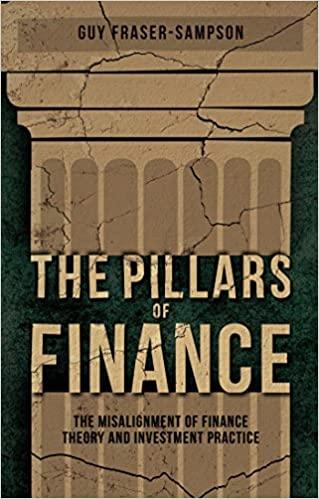Question
Part I: Capital Budgeting Practice Problems a. Consider the project with the following expected cash flows: Year Cash flow 0 -$400,000 1 $100,000 2 $120,000
Part I: Capital Budgeting Practice Problems a. Consider the project with the following expected cash flows: Year Cash flow 0 -$400,000 1 $100,000 2 $120,000 3 $850,000 If the discount rate is 0%, what is the project's net present value? If the discount rate is 2%, what is the project's net present value? If the discount rate is 6%, what is the project's net present value? If the discount rate is 11%, what is the project's net present value? With a cost of capital of 5%, what is this project's modified internal rate of return? Now draw (for yourself) a chart where the discount rate is on the horizontal axis (the "x" axis) and the net present value on the vertical axis (the Y axis). Plot the net present value of the project as a function of the discount rate by dots for the four discount rates. Connect the four points using a free hand 'smooth' curve. The curve intersects the horizontal line at a particular discount rate. What is this discount rate at which the graph intersects the horizontal axis? [ Look at the graph you draw and write a short paragraph stating what the graph 'shows] b. Consider a project with the expected cash flows: Year Cash flow 0 -$815,000 1 $141,000 2 $320,000 3 $440,000 What is this project's internal rate of return? If the discount rate is 1%, what is this project's net present value? If the discount rate is 4%, what is this project's net present value? If the discount rate is 10%, what is this project's net present value? If the discount rate is 18%, what is this project's net present value?
Step by Step Solution
There are 3 Steps involved in it
Step: 1

Get Instant Access to Expert-Tailored Solutions
See step-by-step solutions with expert insights and AI powered tools for academic success
Step: 2

Step: 3

Ace Your Homework with AI
Get the answers you need in no time with our AI-driven, step-by-step assistance
Get Started


